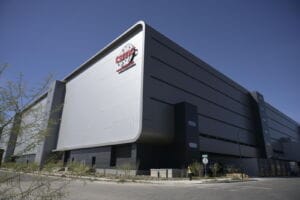As most Americans enjoy a Labor Day of leisure, it’s a good time to reflect on the value of working smarter, not harder, and the tremendous advances of technology that have made jobs safer and enhanced American productivity.
On the 125th anniversary, it’s remarkable how far we’ve come since 1894 when President Grover Cleveland signed legislation establishing the first national holiday for Labor Day on the first Monday of September. At that time, an electrical worker was paid an hourly wage of 15 to 20 cents per hour, while training and safety concerns were minimal.
Today, we have companies like Rosendin in Tempe, one of the nation’s largest private electrical contractors, that makes worker safety its highest priority. Rosendin is the electrical contractor on large-scale projects like the Tempe Streetcar, Scottsdale Stadium and Sky Harbor International Airport, relying on men and women trained in accredited apprenticeship programs.
This year, 39 students completed the Phoenix Electrical Joint Apprenticeship and Training Committee program and twice that many are on track to graduate next year. The PEJATC provides more than just a job. It provides a career path. It is the oldest apprenticeship program in Arizona.
“With such a focus on post-secondary education, these apprentice programs get overlooked because of the perception it’s a non-traditional education path,” said Brandon Stephen, Rosendin division manager. “Given that apprenticeship programs have been around since the Middle Ages, we see this path as the most traditional path.”
These four-year apprenticeships in Phoenix are a viable alternative to colleges and other costly post-secondary education programs. Apprentice electricians pay about $8,000 for the program, which is less than one year of tuition at most colleges, Stephens said.
Additional funding comes from the International Brotherhood of Electrical Workers, National Electrical Contractors Association and corporate sponsorships, like Rosendin.
Apprentice electricians get 8,000 hours of classroom and on-the-job training, while they’re being paid, and they come out of the program with no student-loan debt and a well-paying career for the next 40 years. It’s also a great opportunity for veterans.
Today, Rosendin’s Tempe office employs 135 apprentices and have over 400 indentured apprentices working in the Valley for more than can earn in other industries. Even the company’s chief operating officer started as an apprentice before working his way up. But there needs to be more awareness about these skilled labor opportunities, according to Stephens.
Arizona gained more construction jobs in 2018 than any other state and even more electrical workers will be needed over the next five years, according to estimates by the U.S. Department of Labor.
Shortages of skilled labor have led Rosendin to use technology to create efficiencies on its job sites. They’ve innovated processes using computer modeling and prefabricating electrical components in climate-controlled warehouses to assist their growing workforce.
There are many advantages to this off-site fabrication including:
• More precision and fewer flaws in the electrical components.
• Less time spent on job sites working in extreme weather conditions.
• Improved safety and productivity for workers on job sites and in the warehouses.
The century old company is working to create a 21st century workforce to meet the growing demand for skilled U.S. electrical workers. And the future looks bright for young men, women and veterans who take advantage of the training opportunities in the electrical trades, Stephens said.
“And with a career in construction, you get the privilege of sharing the results of your labor with your entire community for generations forward,” he said.



